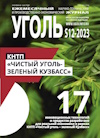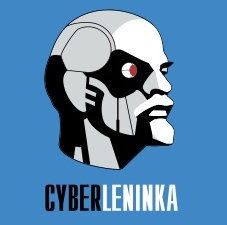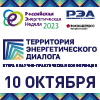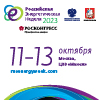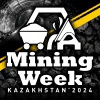
STAFF ISSUES
Original Paper
UDC 622.864:378.016.147 © N.O.Kaledina, 2023
ISSN 0041-5790 (Print) • ISSN 2412-8333 (Online) • Ugol’ – Russian Coal Journal, 2023, № 11, pp. 23-30
DOI: http://dx.doi.org/10.18796/0041-5790-2023-11-23-30
Title
TRAINING OF MINING ENGINEERS: CONTENT AND QUALITY
Authors
Kaledina N.O.1
1National Research University of Science and Technology (MISIS), Moscow, 119049, Russian Federation
Authors Information
Kaledina N.O. Doctor of Engineering Sciences, Professor, Professor of the Department Safety and ecology of mining, Mining Institute, e-mail: nok52@mail.ru
Abstract
In the current socio-political conditions, the formation of the content of higher mining education is particularly relevant, and the key area is the content of that part of training that is responsible for the formation of competencies in the field of safety. The training of a mining engineer that meets the expectations of industry and mining science must harmoniously combine fundamental, applied and practical training in modern production. To improve the quality of professional training of future specialists and ensure the continuity of scientific and pedagogical mining schools, it is necessary to solve a number of problems at the legislative level.
Keywords
Mining, Mining safety, Higher mining education, Content and quality of education, Curriculum structure, Problems of mining engineers training.
References
1. Kazanin O.I. & Drebenshtedt K. Mining education in the 21st century: global challenges and prospects. Notes of the Mining Institute, 2017;225:369-375. (In Russ.).
2. Puchkov L.A. & Petrov V.L. The system of higher mining education in Russia. Eurasian Mining, 2017;(2):57-60. https://doi.org/10.17580/em.2017.02.14.
3. Petrov V.L. Analytical review of the training system for mining engineers in Russia. Mining sciences and technologies, 2022;7(3):240-259. (In Russ.).
4. A Critical Moment The supply and demand of mining, metallurgical and geotechnical engineers in the Australian resources industry. AusIMM report, 2021, 15p.
5. Armstrong J. Mine management failure mechanisms – a geotechnical perspective .AusIMM Bulletin, 2022. [Electronic resource]. Available at: https://www.ausimm.com/bulletin/bulletin-articles/mine-management-failure-mechanisms--a-geotechnical-perspective/(accessed 15.10.2023).
6. Phillips H.R. Mining education in South Africa – past, present and future. Journal of Mines, Metals and Fuels, 1998;46(11):412-418.
7. Vercheba A.A. Personnel training for the mining and geological sector of Russia. Mining Science and Technology (Russia), 2021;6(2):144-153. https://doi.org/10.17073/2500-0632-2021-2-144-153.
8. Vercheba A.A. & Makarov V.A. Applied geology is the basic direction of personnel training in the mining and geological industry. Mining sciences and technologies, 2023;8(2):183–190. https://doi.org/10.17073/2500-0632-2023-01-71. (In Russ.).
9. Kazanin O.I. & Sergeev I.B. Training of a Modern Mining Engineer: Challenges of Universities and Professional Communities. Mining magazine, 2017;(10):75-80. https://doi.org/10.17580/gzh.2017.10.16.
10. Puchkov L.A. & Petrov V.L. Higher mining education in Russia in the context of reforming the educational system / News of higher educational institutions. Mining magazine, 2005, (2), pp.107-116. (In Russ.).
11. Chernikova A.A. & Petrov V.L. Training of mining engineers in Russian universities of research type. Mining magazine. 2015;(8):103-106. https://doi.org/10.17580/gzh.2015.08.22. (In Russ.).
12. Ahrens V.Zh. Mining engineer is promising. Moscow, Ed. House of MISIS Publ., 2017, 24 p. (In Russ.).
13. Arens V.Zh. What and how to teach modern mining engineers. Mining information and analytical bulletin, 2009;(1): p. 90-94. (In Russ.).
14. Kopylov A.B. Technical and mining education in Russia. Yesterday Today. Tomorrow? Figures and facts. Socio-economic and environmental problems of the mining industry, construction and energy: Sat. scientific Tr. 9th International Conference on the Problems of Mining, Construction and Energy: in 2 vols. Vol. 2. Minsk, BNTU, 2013, pp.469-485. (In Russ.).
15. Vavenkov M.V. VR/AR technologies and training for the mining industry. Mining sciences and technologies, 2022;7(2):180-187. https://doi.org/10.17073/2500-0632-2022-2-180-187. (In Russ.).
16. Daling L.M., Khodaei S., Thurner S. et al. A decision matrix for implementing AR, 360° and VR experiences into mining engineering education. Communications in Computer and Information Science, 2021; 1420:225-232. https://doi.org/10.1007/978-3-030-78642-7_30.
17. Mitchell P. Top 10 business risks and opportunities for mining and metals in 2022, 2021. [Electronic resource]. Available at: https://www.ey.com/en_gl/mining-metals/top-10-business-risks-and-opportunities-for-mining-and-metals-in-2022(accessed 15.10.2023).
18. Ponomarev V.P. & Puchkov A.L. General objectives of projects under the DBA program of the NUST MISIS. Ugol’, 2023, (7), pp. 25-30. (In Russ.). DOI: 10.18796/0041-5790-2023-7-25-30.
19. Litvinenko V.S. Methodological support strategy for radical improvement of the quality of training and use of specialists with higher technical education. https://spmi.ru/strategiya-podgotovki-specialistov. (In Russ.).
For citation
Kaledina N.O. Training of mining engineers: content and quality. Ugol’, 2023, (11), pp. 23-30. (In Russ.). DOI: 10.18796/0041-5790-2023-11-23-30.
Paper info
Received August 31, 2023
Reviewed October 13, 2023
Accepted October 26, 2023


